3D printer violin
8 Amazing 3D Printed Violins You Can Print At Home
Violins are centuries-old instruments that have transcended the boundaries of the classical genre they’re known for, and entered more modern musical areas such as polka and even rock. As the instrument itself is as ageless as its potential is vast, 3D printed violin designs have become as creative as the music they play.
3D printed violins come in many shapes and sizes, and many are fully playable designs that range from traditional looks to aesthetically wondrous marvels.
Here we will look at some of the coolest and most creative 3D printed violin models available online to download and print from home, as well as bows and other additions to bring your new and personal twists to this 16th century instrument of worldwide renown.
The Strativariant eViolin Rev 3
If the words ‘electric violin’ don’t get you excited, then we don’t know what will. This third version of a 3D printed violin is designed to work with an amp similarly to an electric guitar.
This crossbow-looking 3D printed violin is an easy-print design that had a lot of passion put into its designs and redesigns before landing on the gorgeous look you can see here.
Along with the files are detailed instructions to tell you exactly how to set it up and plug it all in. Because this is a multi-piece print, it’s easy to print it in any combination of colors you like, though we prefer this sleek red and black look.
While the prints may be easy, the assembly will take a little bit of engineering, but the end result shows that the effort is well worth it. If you’d rather peruse the older or alternate designs, they are also included in the link here.
3DVarius
For those of you who want a 3D printed violin, but lack the necessary hardware to make one yourselves, French company 3Dvarius makes and sells 3D electric printed violins that sound as good as they look.
Started by French engineer and virtuoso Laurent Bernadac via Kickstarter, these trail-blazing 3D printed electric violins are a unique take on a traditional violin born from combining Bernadac’s twin passions of construction and music.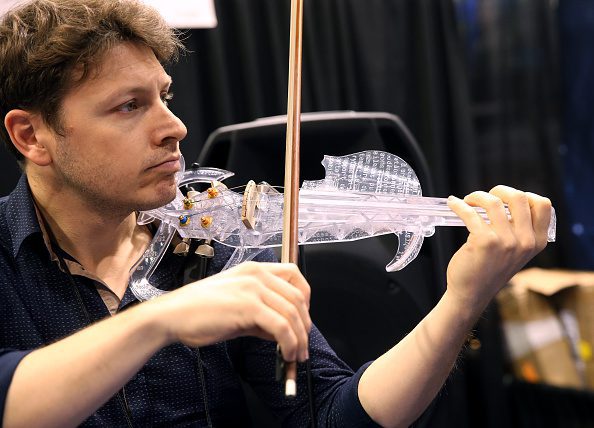
The 3DVarius violins are light in weight with a sleek design that has been perfected in form and function through dedicated trial-and-error. If you don’t believe us, you can watch Bernadac himself alongside the musical talent of Pauline Henric in this video here.
The Classic Violin
While electric violins may be the truest way to modernize an old classic, many still prefer the traditional version. And so this beautiful acoustic piece was designed as a 3D printed violin with tradition in mind.
The elegance and sheen of this violin was accomplished with an SLA 3D printer, and the designer has not tested the prints on FDM printers. However, the design as it is in the files here result in a fully playable and remarkably picturesque 3D printed violin.
The Full-Size Acoustic Violin
When an artist updates a work in progress for the last time, it means that they believe they’ve accomplished something special.
While the designer admits that this design for a 3D printed acoustic violin isn’t perfect, it is both aesthetically pleasing and playable. The finish in the example image included in this link looks more like a painting than an instrument, this is a 3D printed violin any musician would be happy to have in their home.
The finish in the example image included in this link looks more like a painting than an instrument, this is a 3D printed violin any musician would be happy to have in their home.
The designer recommends protective eyewear during post-print assembly, as some of the parts are thin and may break while stringing.
Some parts of this design may need a little tweaking, but with a careful look at the measurements, you can tweak the sizes to get them just right and ensure this design can become a personal instrument that you can be proud to have made yourself.
The 8-Bit Violin
This 3D printed violin may not be as polished as others, but you can’t deny it’s a unique look that may be directed towards old-school gamers, but can easily appeal to anyone who wants to 3D print something a little bit different.
The designer for this 3D printed violin admits that the files are somewhat slapdash, and has uploaded them for others to work on, tweak, and improve to see what they can do.
While to some, this unfinished approach may seem like just adding more work, but one look at this design should have many handy musicians eager to get their hands on a heavily modifiable 3D printed violin that looks like it could belong to Banjo Kazooie’s titular bear!
Despite the rudimentary nature of the files, the included instructions found here still include detailed instructions and advice for how to get the best results from this 3D printed 8-bit violin that will get heads turning no matter where you are.
The F-F-Fiddle
Don’t let that name fool you (or make you stammer), not only is the F-F-Fiddle a 3D printed violin, it’s apparently the first playable 3D printed electric violin ever designed!
A true passion project, and an impressive one at that, this 3D printed violin was uploaded to Thingiverse and repeatedly updated until finalized as the light and compact violin you can see and hear here.
Not only can you find the free files here, but you can also find a link to the creators page where he encourages reviews, advice, updates, and personal tweaks from other 3D printing and violin enthusiasts to help each other.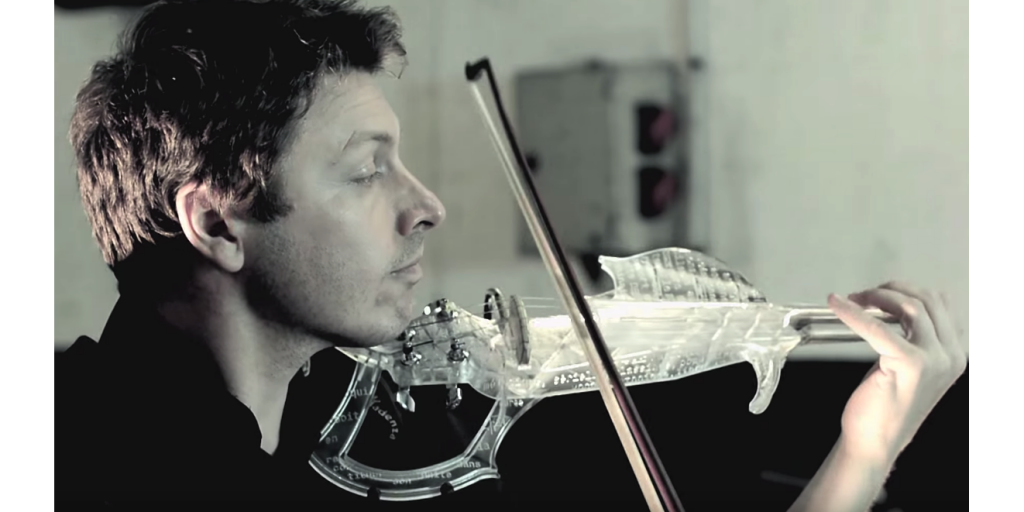
Modular Fiddles
Modular Fiddles are a modern-looking take on the classic violin. Originally designed as a prototype to see if playable 3D printed violins were viable, the blocky shape found a large following, and it was further developed to be on par with even the most attractive 3D printed violins available today.
Like standard violins, modular fiddles come in many forms, the most popular of which are the 4- and 5-string variants, as well as the Hardanger, all of which have been developed over time to rival their rounded counterparts.
Which type you choose depends on your musical experience and overall preference, but each one makes for a unique 3D printed violin that simply can’t be found in traditional stores.
Highly detailed instructions for all three types can be found here, as well as a detailed history and an open blog where you can share your creations, modifications, and advice with fellow users.
Piezoelectric Violins
Few 3D printed violins are as cool as the piezoelectric violin. While not commonly found as free designs, they are worth a highly honorable mention due to how they look alone.
While not commonly found as free designs, they are worth a highly honorable mention due to how they look alone.
Closer resembling something you’d expect to see held by a Zora or sci-fi character, these amphibian-looking instruments truly need to be seen (and heard) to be believed.
3D printed piezoelectric violins are incredibly complicated and extremely expensive. However, if you are creative enough and have the right equipment, you can absolutely try printing one of these violins yourself.
If you manage to pull it off, you could find it to be an extremely popular 3D printed violin to sell online, though given the material expenses, you shouldn’t expect the average music enthusiast to be able to cough up enough dough to make the effort worth it.
Despite this, there’s something truly special about 3D printed piezoelectric violins that can neither be explained nor denied.
3D Printed Violin Accessories
Many instruments have their share of extra bits and pieces, and violins are no exception.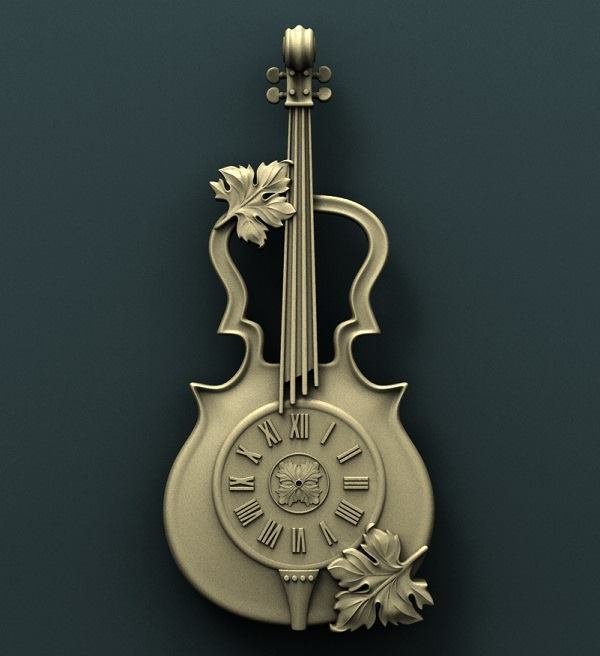 Some additions are as necessary as a saxophone’s reed, some are simply practical additions like a guitar’s strap.
Some additions are as necessary as a saxophone’s reed, some are simply practical additions like a guitar’s strap.
3D printed violin accessories help musicians of all experience levels play to the best of their abilities as comfortably as possible.
Bow Guides
Truly steady hands are a gift surprisingly few people are given, but those who are on the shaky side aren’t to be left out of the wonderful world of violins.
3D printed bow guides do as the name implies, and act similarly to a pool cue guide to help people keep their bows steady as they play.
You can find a standard design for a 3D printed violin bow guide on Thingiverse here, simply choose the file that fits the size you need and print away!
Chinrests
Comfort can be as important as function, especially when dealing with a musical instrument that can take hours of practice and playing.
Chinrests are just as the name implies, comfortable contoured additions to a violin’s body to rest your chin on while you play.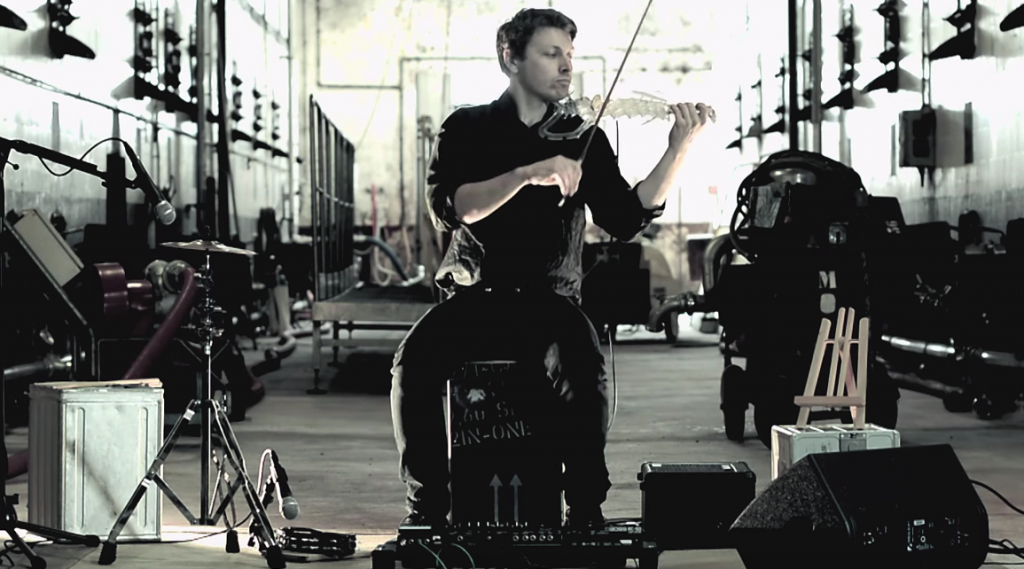
Like the bow guides, 3D printed violin chinrests come in many sizes and styles to suit your violin here. Or you can go a little more extra and print out this swan chinrest for a little more style.
Violin Stands
Violins are not only expensive; they can be very fragile too. While padded cases help to keep them safe in transit, if you want to display your own 3D printed violin proudly in your home (and let’s face it, who wouldn’t?), you’ll need a good stand.
Fortunately, 3D printed violin stands are not only plentiful and free, they’re also available in a wide variety of styles that range from minimalist for decorative value, and extra sturdy for security.
Modular Fiddle • OpenFab PDX
The Modular Fiddle is a highly customizable 3D printed violin.
Change any part in 15 minutes and make a fiddle that is uniquely yours.
The Modular Fiddle fosters a different relationship between player and instrument.
What happens when you can fiddle with your violin’s construction with the same kind of playful creativity that you might bring to your playing?
Modular Fiddles are…
Viola or Violin
4, 5, or 6 strings
Solid Body Electric, Acoustic, or Acoustic-Electric
Fretted or Fretless
Viola da Gamba
Hardanger Fiddle
Or some combination of the above.
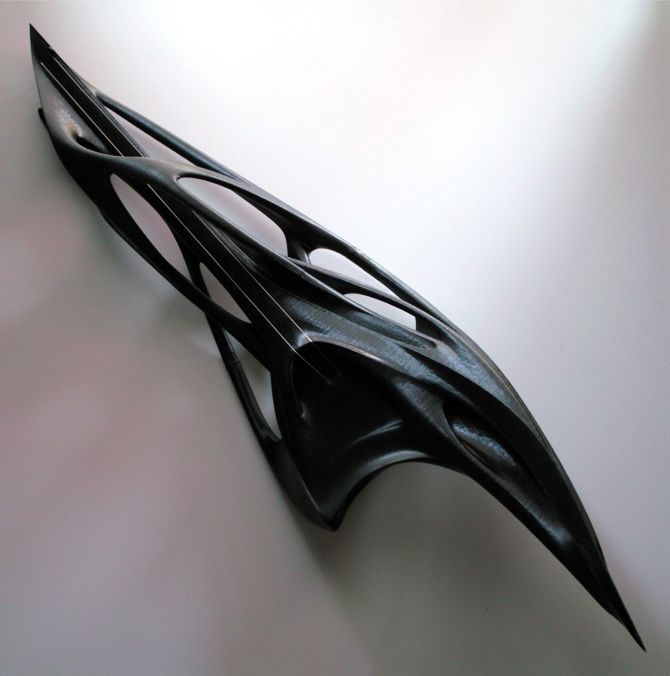
A 3D Printed Violin Platform for Customizable Instruments
The Modular Fiddle first launched in 2018 as a 4-string 3D printed violin. Through community contributions, custom build requests, and our inherent curiosity, the project has since expanded to include a diverse array of bowed instruments. From the baroque to the distortion-ready electric. Shoot, or even baroque with distortion!
The Modular Fiddle is a 3D printed violin designed to quickly exchange parts in order to test new ideas and quickly create custom instruments.
Centering Exploration for Violin Making
The power of the internet combined with 3D printing allow widespread distribution and experimentation with product design.
The Modular Fiddle is a 3D printed violin designed to quickly test experimental violin concepts and acoustics only possible with 3D printing. Concepts that test well can be incorporated into traditional violin methods to advance the craft for all string instruments.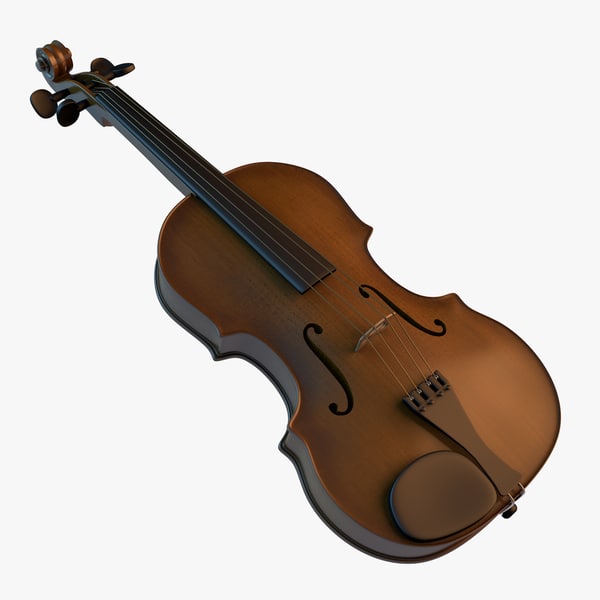
The Modular Fiddle centers exploration in a way that has never been done before. In so doing, it introduces a great deal of flexibility to a craft (violin making) that has become very rigid and bound in tradition.
Evolution of Violin Sound
Violin history is rich with variations, and many elements of the instrument have evolved slowly over time. Luthiers attempted to copy other luthiers, but they sometimes made small mistakes that resulted in improved acoustics. Such mistakes led to the modern shape of the F holes.
What if we could accelerate that natural iterative process tenfold, hundredfold, exponentially? We haven’t seen a significant leap in violin design and construction since the invention of higher tension strings during the 18th century. We’re due!
Using advanced digital design software, 3D printing, and the Modular Fiddle, violin design and acoustics are poised to take a significant leap. 3D printing allows never-before-possible acoustic structure for the 3D printed violin.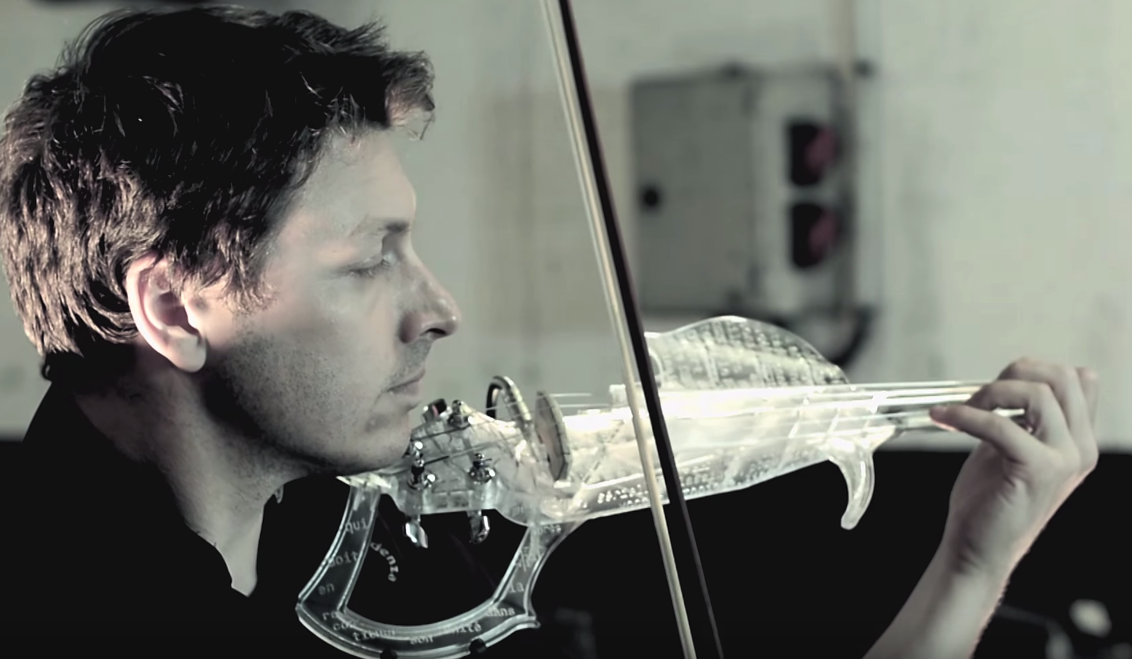 Emerging design techniques, such as generative design, could have significant impacts on instrument weight and performance.
Emerging design techniques, such as generative design, could have significant impacts on instrument weight and performance.
Good Sound is Subjective
What we consider to be ‘good sound’ changes over time. Desirable instrument sound is a combination of musical style, human psychology, and culture.
What new sounds can a 3D printed violin make?
Currently, the Modular Fiddle has the sound quality and playability of a mid-range wooden violin with a noticeable decrease in volume and projection. While the current sound quality is impressive, our focus should not be matching the quality of wood — instead we should try to create altogether different sound.
Build Your Own
Interested in building your own Modular Fiddle? A kit is a great way to start and will ensure that you get the best components and the most up-to-date print files that are designed for those components.
Check out the instructions page for a FAQ, 4-string files, parts lists, and detailed step-by-step assembly instructions.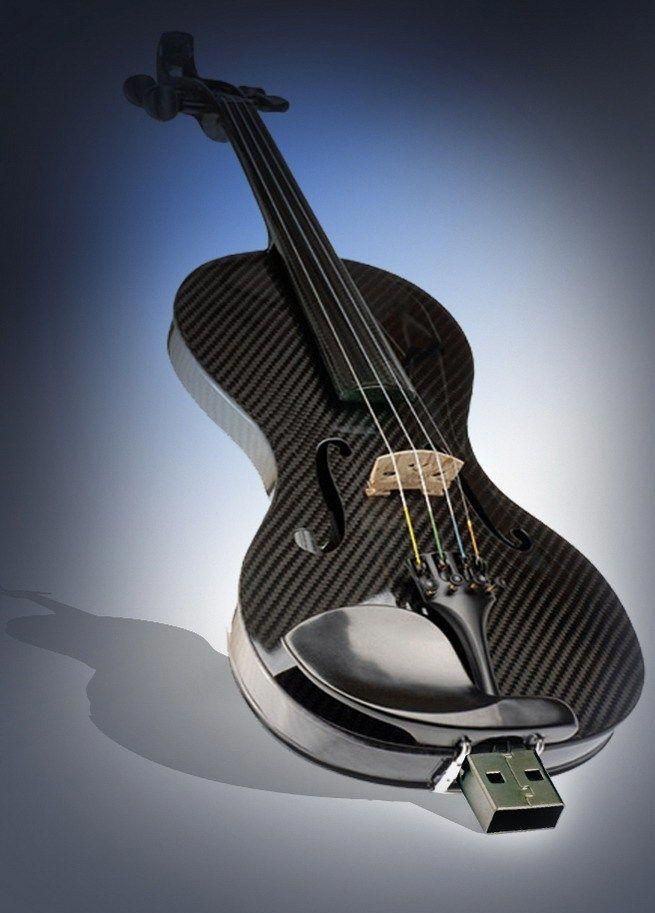
Join the Google Group and the Discord Server for discussion and problem-solving.
Acknowledgements
The Modular Fiddle is inspired in part by Hova Labs’ Hovalin. Check out the Hovalin here.
Many thanks to Vojtěch Blahout for his excellent guide Making the Violin which provides great info as well as many useful scale SVG drawings that can be used in CAD.
90,000 University of Texas students 3D printed a six-string violinNews
American students have made a unique six-string violin by printing an electric instrument on a 3D printer. Let's talk about why they needed it.
University of Texas at Austin student Sean Riley has been playing since the age of seven, graduated from the prestigious Juilliard School and even played for Prince Charles at his 65th birthday party, and is now working on his PhD in music after moving to Texas. Although the young virtuoso owns a rare 240-year-old violin, this is not enough: he has recently become interested in the work of composer John Adams - the author of a concerto for electric violin and orchestra called "Dharma in Big Sur". The singularity of this work lies in the fact that the leading part is performed by a six-string violin.
The singularity of this work lies in the fact that the leading part is performed by a six-string violin.
An ordinary instrument is equipped with four strings, but six-string violins are very rare and therefore expensive. The cost of such a tool can easily reach four and a half thousand dollars. Sean decided to go the other way by designing and printing his own original design violin. Engineering student Daniel Goodwin and art student Milton helped with the project, using tools in the university's fablab.
Design and manufacture of the instrument took almost a year. The body and neck of the instrument are made of 3D printed parts, the pickup is custom-made, and the unusual ribs that decorate the violin are made of porcelain with the addition of ground wood, bones and shells - a direct reference to the main theme of "Dharma in Big Sur", namely inviting atmosphere of the ocean coast. Not without an unfortunate incident: the first prototype broke almost immediately, so the design had to be strengthened and reprinted. The new instrument has been running for several months now, and at the end of February, Sean plans to take the stage for the first time with a homemade violin in his hands and perform "Dharma in Big Sur" in front of the general public.
The new instrument has been running for several months now, and at the end of February, Sean plans to take the stage for the first time with a homemade violin in his hands and perform "Dharma in Big Sur" in front of the general public.
Do you have any interesting news? Share your developments with us, and we will tell the whole world about them! We are waiting for your ideas at [email protected].
Follow author
Follow
Don't want
5
Article comments
More interesting articles
5
Follow author
Subscribe
Don't want
Compared to traditional casting, 3D printed sand casting has several advantages. ..
..
Read more
5
Subscribe to the author
Subscribe
Don't want
Anodizing is a process aimed at creating protective oxide layers on the surfaces of products...
Read more
82
Follow author
Follow
Don't want
Collaboration 3D
We are pleased to present you our joint development with Speci...
Read more
A student 3D printed an unusual violin
A student 3D printed an unusual violin- Interesting
- Technologies
1 0 579
- 02 February 2018 14:58
- Erika Efremova, journalist of "Reedus", department "Science and Technology"
3D printing is increasingly being used to make unusual items such as musical instruments.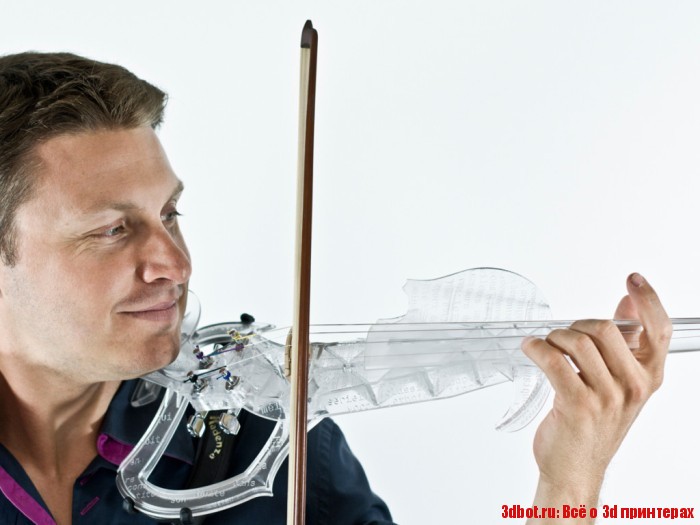 For example, University of Texas student Sean Riley used a 3D printer to print an unusual six-string violin (recall that a standard violin has four strings).
For example, University of Texas student Sean Riley used a 3D printer to print an unusual six-string violin (recall that a standard violin has four strings).
The idea to create such an instrument came to Riley after he saw a concert of composer John Adams playing a six-string electric violin. It was too expensive for a student to buy such an expensive instrument, so he decided to try to create a violin using a printer.
Inventors have previously made standard violins on a 3D printer, but no one has yet made one with six strings. Therefore, there were simply no mechanisms and schemes for such a device, I had to develop it myself, says Sean Riley.
Together with two colleagues, Riley wrote down each element of the violin to make a complete program for the printer. When the project was completed, an incident happened - the students broke the violin on the first day, so they had to start printing again.

